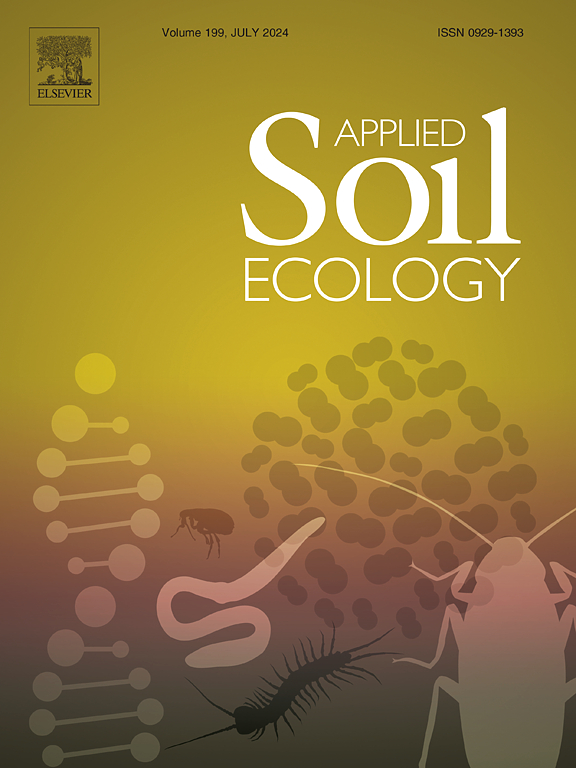Soil and vegetation drivers of microbial attributes in a microhabitat mosaic at different successional stages after restoration of inland sand dunes
IF 4.8
2区 农林科学
Q1 SOIL SCIENCE
引用次数: 0
Abstract
The study focused on sand dunes restored by clearing vegetation to activate wind-blown sands. Soil-plant-microorganism interactions during succession are key to understanding the drivers of continuous turnover in above- and belowground compartments. The aim was to determine changes in microbial activity, abundance, and community composition in a heterogeneous mosaic of microhabitats, i.e., biological soil crust (BSC), below-crust soil, rhizosphere soil, and bare soil, at different stages of succession. We also studied the relationships between microorganisms and substrate and vegetation factors, to better understand microbial community development and factors driving their changes with succession. The soil environment was highly heterogeneous in terms of microorganisms, with two key compartments, i.e., BSC and rhizosphere soil, being biological hotspots of microbial biomass and activity. G− bacteria and Firmicutes showed different succession-related abundance patterns, likely due to physiological differences. The abundance of all groups of microbes was positively influenced by organic C, total N, and nutrients (P, K, Ca) in the substrate, which is linked to vegetation development with succession. Similar parameters also influenced microbial community structure, as shown by the PLFA profile. Substrate parameters explained more variability in bacterial communities, while vegetation traits were more relevant for soil fungi. Herbaceous plants were colonized by both arbuscular mycorrhizal and dark septate endophytic fungi, with the latter showing higher colonization and a significant increase with succession. Understanding the factors influencing the transition from bare sand to pine forests is crucial for the restoration of inland dunes, rare ecosystems in temperate climates vulnerable to environmental change.

求助全文
约1分钟内获得全文
求助全文
来源期刊

Applied Soil Ecology
农林科学-土壤科学
CiteScore
9.70
自引率
4.20%
发文量
363
审稿时长
5.3 months
期刊介绍:
Applied Soil Ecology addresses the role of soil organisms and their interactions in relation to: sustainability and productivity, nutrient cycling and other soil processes, the maintenance of soil functions, the impact of human activities on soil ecosystems and bio(techno)logical control of soil-inhabiting pests, diseases and weeds.
 求助内容:
求助内容: 应助结果提醒方式:
应助结果提醒方式:


